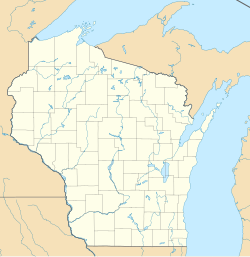Rice Lake Carnegie Library | |
Formerly listed on the U.S. National Register of Historic Places | |
| Location | 16 S. Main St., Rice Lake, Wisconsin |
|---|---|
| Coordinates | 45°30′4″N91°44′2″W / 45.50111°N 91.73389°W |
| Area | 1 acre (0.40 ha) |
| Built | 1905 |
| Architect | Parkinson and Dockendorff |
| Architectural style | Late 19th And 20th Century Revivals |
| NRHP reference No. | 80000434 [1] |
| Significant dates | |
| Added to NRHP | June 20, 1980 |
| Removed from NRHP | March 20, 1986 |
The Rice Lake Carnegie Library was a Carnegie library in Rice Lake, Wisconsin. It was built in 1905, replacing a library based in the city's high school, and was one of 63 Carnegie libraries in Wisconsin. The city left the building for a new library in 1978, and the building was demolished on June 26, 1985. [2] [3]
The library was added to the National Register of Historic Places on June 20, 1980. It was removed from the National Register on March 20, 1986, following its demolition. [1]

